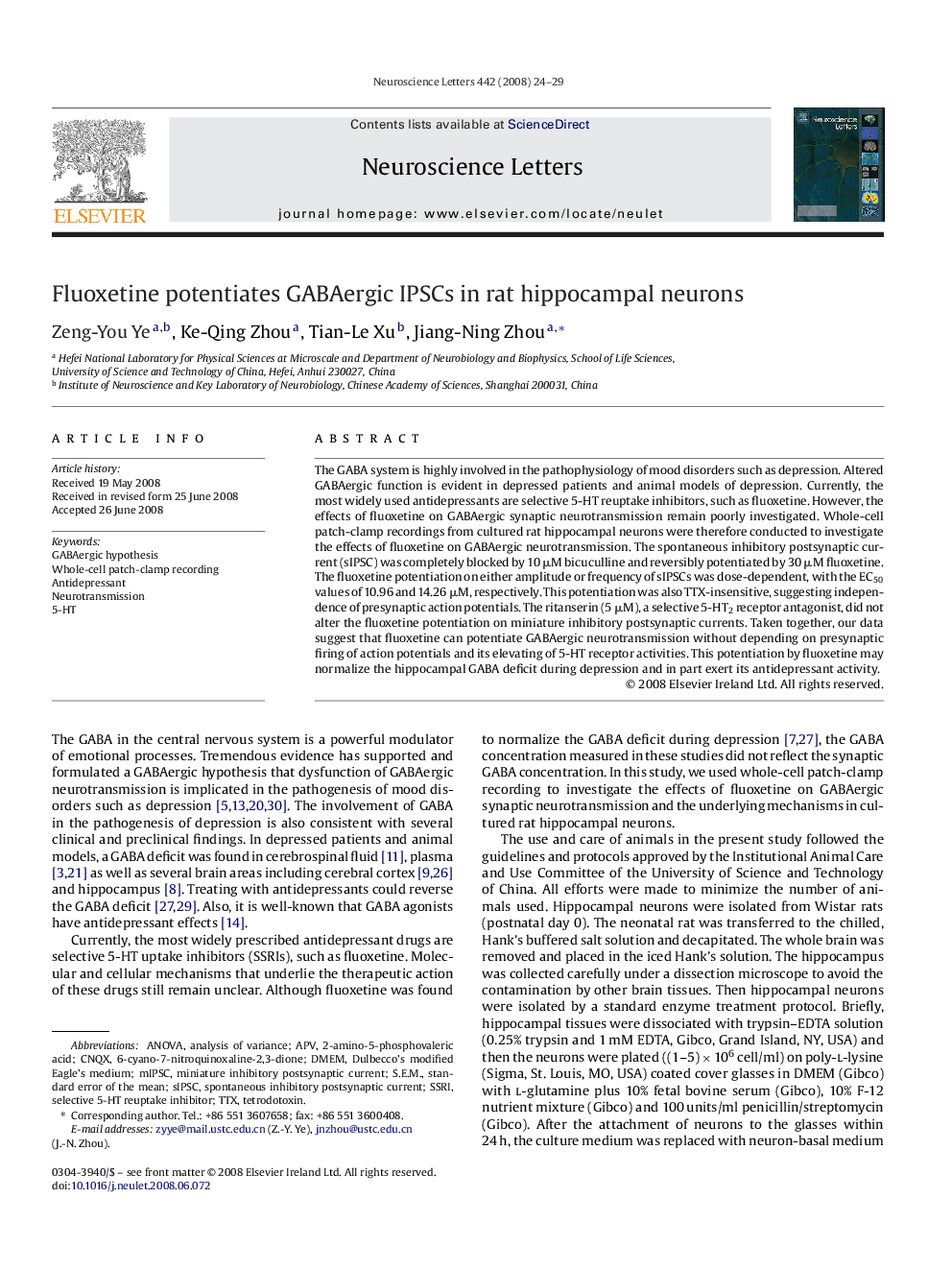| Article ID | Journal | Published Year | Pages | File Type |
|---|---|---|---|---|
| 4348020 | Neuroscience Letters | 2008 | 6 Pages |
The GABA system is highly involved in the pathophysiology of mood disorders such as depression. Altered GABAergic function is evident in depressed patients and animal models of depression. Currently, the most widely used antidepressants are selective 5-HT reuptake inhibitors, such as fluoxetine. However, the effects of fluoxetine on GABAergic synaptic neurotransmission remain poorly investigated. Whole-cell patch-clamp recordings from cultured rat hippocampal neurons were therefore conducted to investigate the effects of fluoxetine on GABAergic neurotransmission. The spontaneous inhibitory postsynaptic current (sIPSC) was completely blocked by 10 μM bicuculline and reversibly potentiated by 30 μM fluoxetine. The fluoxetine potentiation on either amplitude or frequency of sIPSCs was dose-dependent, with the EC50 values of 10.96 and 14.26 μM, respectively. This potentiation was also TTX-insensitive, suggesting independence of presynaptic action potentials. The ritanserin (5 μM), a selective 5-HT2 receptor antagonist, did not alter the fluoxetine potentiation on miniature inhibitory postsynaptic currents. Taken together, our data suggest that fluoxetine can potentiate GABAergic neurotransmission without depending on presynaptic firing of action potentials and its elevating of 5-HT receptor activities. This potentiation by fluoxetine may normalize the hippocampal GABA deficit during depression and in part exert its antidepressant activity.
